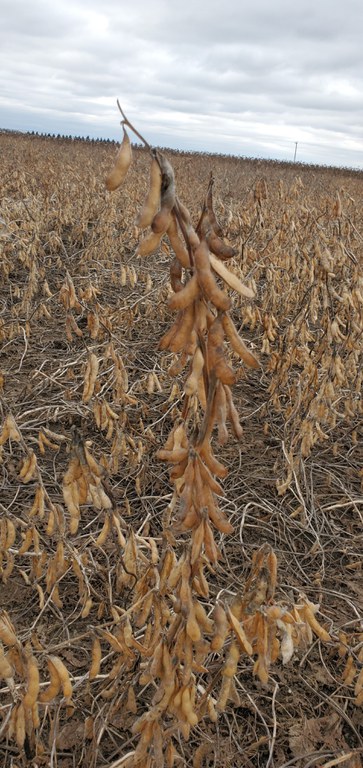Don’t Graze Unharvested Soybean
Producers should not introduce hungry cattle to unharvested soybean fields. Ammonia toxicity is a threat to cattle that overconsume soybean. Whether it’s a pile of harvested soybean laying on the ground or an unharvested soybean field where cows have unlimited access. Eating too much soybean can lead to dead cattle.

Unharvested soybean field.
Ammonia toxicity has been seen in cows that found a pile of harvested soybean and gorged themselves. With the large amount of whole soybean consumed and an active rumen, combined with the urease enzyme in soybean, this can lead to more ammonia production than the rumen microbes can normally utilize. Excess ammonia spills into the blood steam, causing death.
If you observe the toxicosis early enough, you can drench the cow with 1 to 2 gallons of vinegar (5% acetic acid) to change the ammonia to ammonium. The ammonium ion won’t leave the rumen and prevents the toxicosis. Unfortunately, most producers don’t find the animal soon enough and don’t have enough vinegar on hand to deal with an outbreak.
Cows can consume small amounts (2-4 pounds per day) of soybean as part of a balanced ration. This would provide additional protein to the ration. After 4 pounds of soybean in a mature cow ration, the oil content of the ration starts to interfere with digestion by the rumen microbes. When the oil content of the ration gets above 7% to 8%, then the oil becomes toxic to rumen microbes.
The unknown is what amount of soybean a cow will eat if she gets into an unharvested soybean field. If there is grass or corn stover, the cow might limit her soybean consumption while she is also eating the bean pod and stems. If she consumes too much soybean, ammonia toxicosis will lead to tremors, the cow will lay down, and die. Veterinary treatment is generally unsuccessful.
Karl Hoppe, Ph. D.
Karl.Hoppe@ndsu.edu
Livestock Systems Extension Specialist


